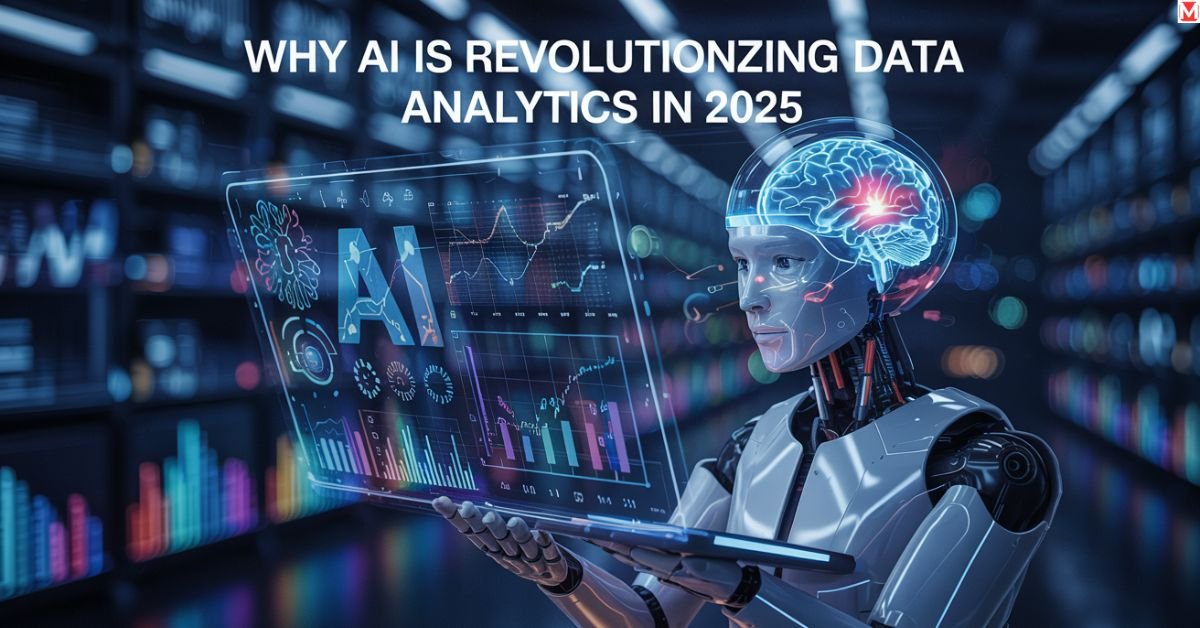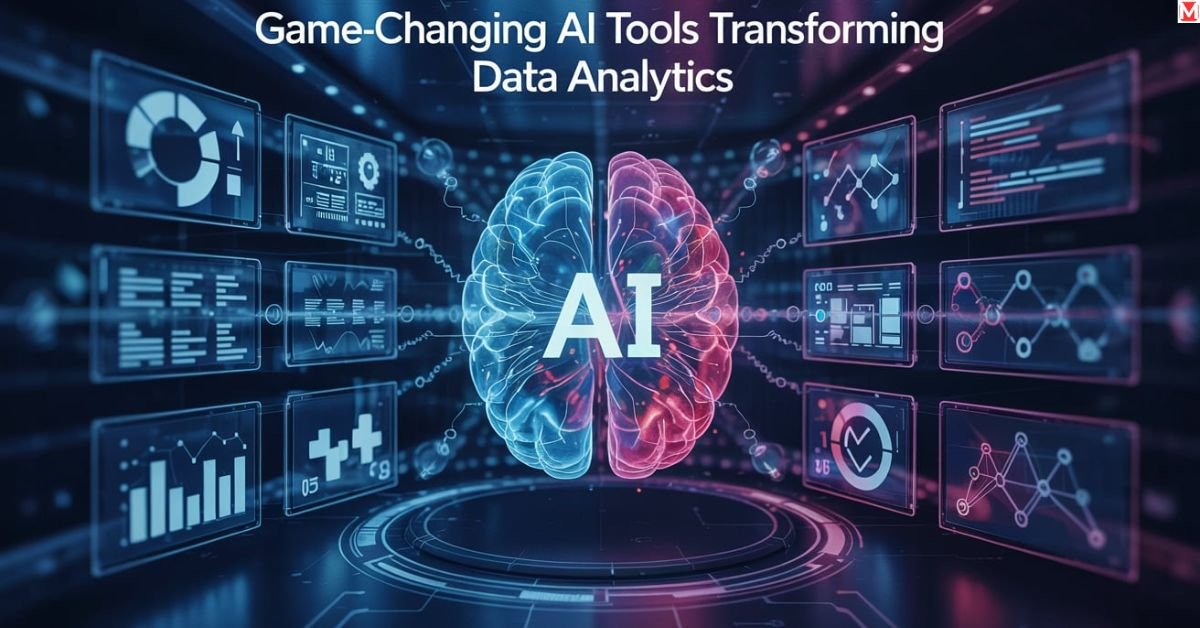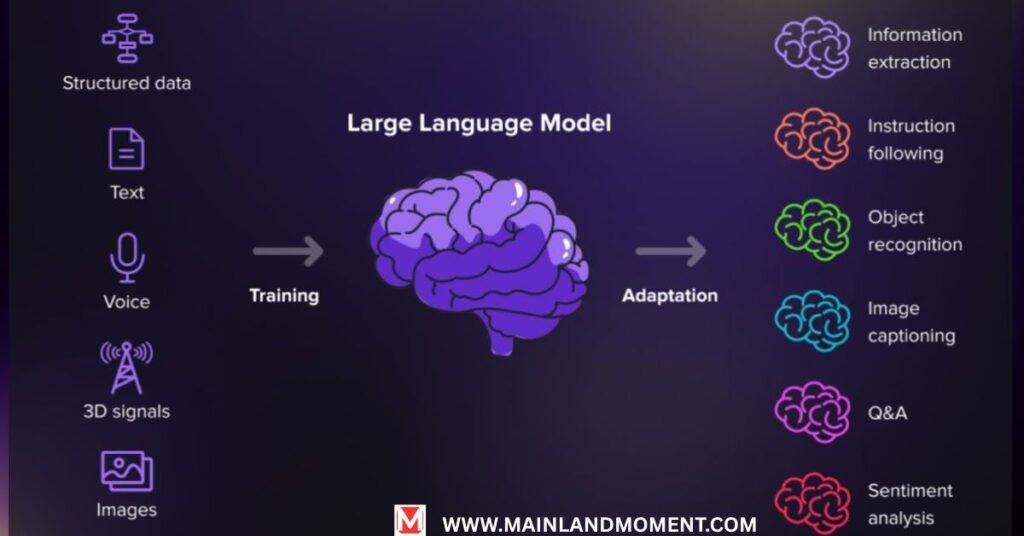Data analytics has transformed dramatically over the past few years, but 2025 marks a true turning point. Companies now process information faster than ever before, thanks to artificial intelligence breakthroughs that seemed impossible just a decade ago. Organizations using AI-powered analytics report 73% faster decision-making and 52% better accuracy in their predictions.
What Is AI Data Analytics?

AI data analytics combines artificial intelligence with traditional analysis methods to uncover insights that humans might miss. Think of it as having a super-smart assistant that never gets tired, never makes calculation errors, and can spot patterns across millions of data points in seconds.
This technology uses machine learning algorithms to automatically find relationships in your data. Instead of manually creating reports and charts, AI systems can predict future trends, identify anomalies, and even suggest specific actions you should take.
For example, a retail company might use AI analytics to predict which products will sell best next month, automatically adjusting inventory levels and marketing campaigns. The system learns from past sales data, weather patterns, social media trends, and hundreds of other factors to make these predictions.
Why AI Is Revolutionizing Data Analytics in 2025

Speed and Scale Beyond Human Capability
Modern AI systems can process terabytes of data in minutes, not weeks. This speed advantage means businesses can respond to market changes almost instantly. A financial company can detect fraud patterns as they happen, rather than discovering them days later during routine audits.
Predictive Power That Works
Traditional analytics told us what happened yesterday. AI data analytics tells us what will happen tomorrow. Companies are achieving 85% accuracy rates in their predictions, enabling them to make confident decisions about future investments and strategies.
Accessibility for Everyone
You don’t need a PhD in statistics to use modern AI analytics tools. These platforms feature natural language processing that lets you ask questions in plain English. Instead of writing complex queries, you can simply ask, “Which customers are most likely to cancel their subscriptions?”
Automation That Saves Time
AI handles the boring stuff automatically. Data cleaning, report generation, and routine analysis now happen without human intervention. This frees up analysts to focus on strategic thinking and creative problem-solving.
Game-Changing AI Tools Transforming Data Analytics

Analytify: AI-Powered Google Analytics Reporting
Analytify revolutionizes how businesses understand their website performance. This tool uses AI to automatically generate insights from your Google Analytics data, transforming complex metrics into actionable recommendations.
Key features include:
- Automated report generation that saves 10+ hours per week
- Smart insights that highlight unusual patterns or opportunities
- Predictive analytics for forecasting website traffic and conversions
- Custom dashboards that focus on your specific business goals
Google Analytics 4: The Foundation for AI-Driven Analytics
GA4 represents Google’s biggest leap forward in web analytics. Unlike its predecessor, GA4 uses machine learning to fill data gaps and provide predictive insights without additional setup.
The platform’s AI capabilities include predictive metrics that forecast revenue and customer behavior, automatic anomaly detection that alerts you to unusual patterns, and smart goals that identify high-value user actions.
Looker Studio: Visualizing AI Insights
Looker Studio transforms raw data into compelling visual stories. Its AI-powered features help create reports that automatically update and adapt to changing business conditions.
Advanced capabilities include intelligent data connections that merge information from multiple sources, auto-generated visualizations that choose the best chart types for your data, and natural language queries that let you explore data conversationally.
Emerging Enterprise Tools Worth Watching
DataRobot leads the automated machine learning space, enabling businesses to build and deploy AI models without extensive coding knowledge. Their platform handles everything from data preparation to model deployment.
H2O.ai provides open-source AI tools that democratize advanced analytics. Their AutoML platform makes it possible for any organization to implement sophisticated AI data analytics solutions.
Expert Strategies for Maximizing AI Data Analytics Success
Data Quality: The Foundation That Can't Be Ignored
Clean data is essential for accurate AI predictions. Poor quality information leads to unreliable insights and costly mistakes. Successful organizations invest heavily in data governance and quality assurance processes.
Best practices include regular data audits and cleaning procedures, automated validation rules that catch errors before they spread, clear documentation of data sources and transformations, and training programs that help employees understand data quality importance.
Model Transparency: Building Trust in AI Decisions
Explainable AI has become crucial for business adoption. Stakeholders need to understand how AI systems reach their conclusions, especially for high-stakes decisions like loan approvals or medical diagnoses.
Effective transparency strategies involve clear documentation of model logic and assumptions, visual explanations that show how different factors influence outcomes, and regular audits to ensure models perform as expected.
Continuous Learning: Keeping Models Sharp
AI models need constant updates to remain accurate. Market conditions change, customer preferences evolve, and new data sources become available. Organizations must establish processes for regular model retraining and performance monitoring.
Ethical AI Implementation: Doing It Right
Bias detection and mitigation have become top priorities. AI systems can perpetuate or amplify existing inequalities if not carefully designed and monitored. Successful implementations include diverse perspectives in model development and regular bias audits.
Real-World Applications: AI Analytics in Action
Healthcare Analytics Revolution
Hospitals use AI data analytics to predict patient outcomes and optimize treatment plans. Machine learning algorithms analyze medical records, lab results, and vital signs to identify patients at risk of complications.
One major hospital system reduced readmission rates by 23% using AI-powered risk scoring. The system analyzes over 200 variables to predict which patients need additional monitoring or support services.
Financial Services Transformation
Banks employ AI analytics for fraud detection and risk assessment. These systems analyze transaction patterns, customer behavior, and external data sources to identify suspicious activities within milliseconds.
A leading credit card company uses AI to process over 150 million transactions daily, detecting fraud with 99.7% accuracy while reducing false positives by 60%.
E-commerce and Retail Innovation
Online retailers use AI analytics to personalize shopping experiences and optimize inventory management. These systems analyze browsing patterns, purchase history, and seasonal trends to predict demand and recommend products.
Major e-commerce platforms report that AI-driven recommendations account for 35% of their total revenue, demonstrating the powerful impact of intelligent data analytics.
Navigating the Challenges of AI-Driven Data Analytics
Technical Hurdles
Data integration remains a significant challenge. Organizations typically have information scattered across multiple systems, making it difficult to create unified analytics platforms. Modern AI tools help bridge these gaps through automated data connections and transformation capabilities.
Scalability issues arise as data volumes grow exponentially. Cloud-based AI analytics platforms offer solutions by providing virtually unlimited processing power and storage capacity.
Organizational Obstacles
Skill gaps present ongoing challenges. Organizations need professionals who understand both technical AI concepts and business applications. Many companies invest in training programs and partnerships with educational institutions to address these needs.
Change management becomes crucial when implementing AI analytics. Employees may resist new tools or worry about job security. Successful organizations focus on showing how AI enhances human capabilities rather than replacing them.
READ MORE ABOUT: Learn more about Google Analytics 4
2025 Trends Shaping the Future
Synthetic data generation is revolutionizing AI training. Organizations can create artificial datasets that preserve statistical properties while protecting individual privacy. This approach enables more robust AI models without compromising sensitive information.
Edge AI analytics brings processing power closer to data sources. Instead of sending information to centralized servers, AI algorithms run on local devices, reducing latency and improving privacy protection.
Real-time decision making becomes standard across industries. AI systems provide instant insights that enable immediate responses to changing conditions, from supply chain disruptions to customer service issues.
Frequently Asked Questions: AI Data Analytics
What is AI data analytics?
AI data analytics combines artificial intelligence with traditional analysis methods to automatically discover insights, predict future trends, and recommend actions. It uses machine learning algorithms to process large amounts of information faster and more accurately than human analysts.
How does AI data analytics work?
AI systems learn from historical data to identify patterns and relationships. They use these patterns to make predictions about future events or classify new information. The process involves data collection, cleaning, model training, and continuous improvement based on new results.
What tools do I need for AI data analytics?
Essential tools include cloud-based platforms like Google Analytics 4, visualization software like Looker Studio, and specialized AI platforms like DataRobot. Many organizations start with user-friendly tools before advancing to more sophisticated solutions.


